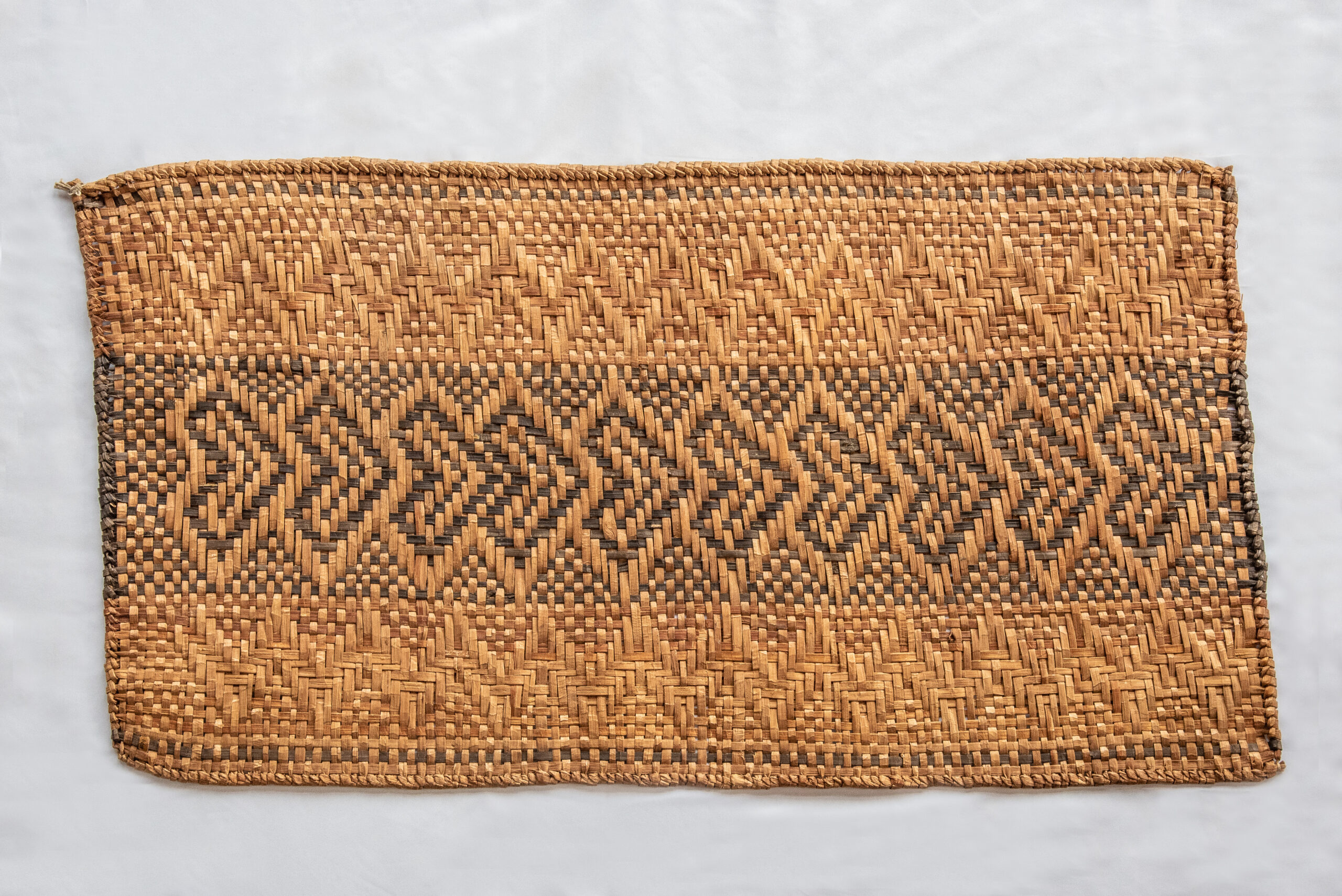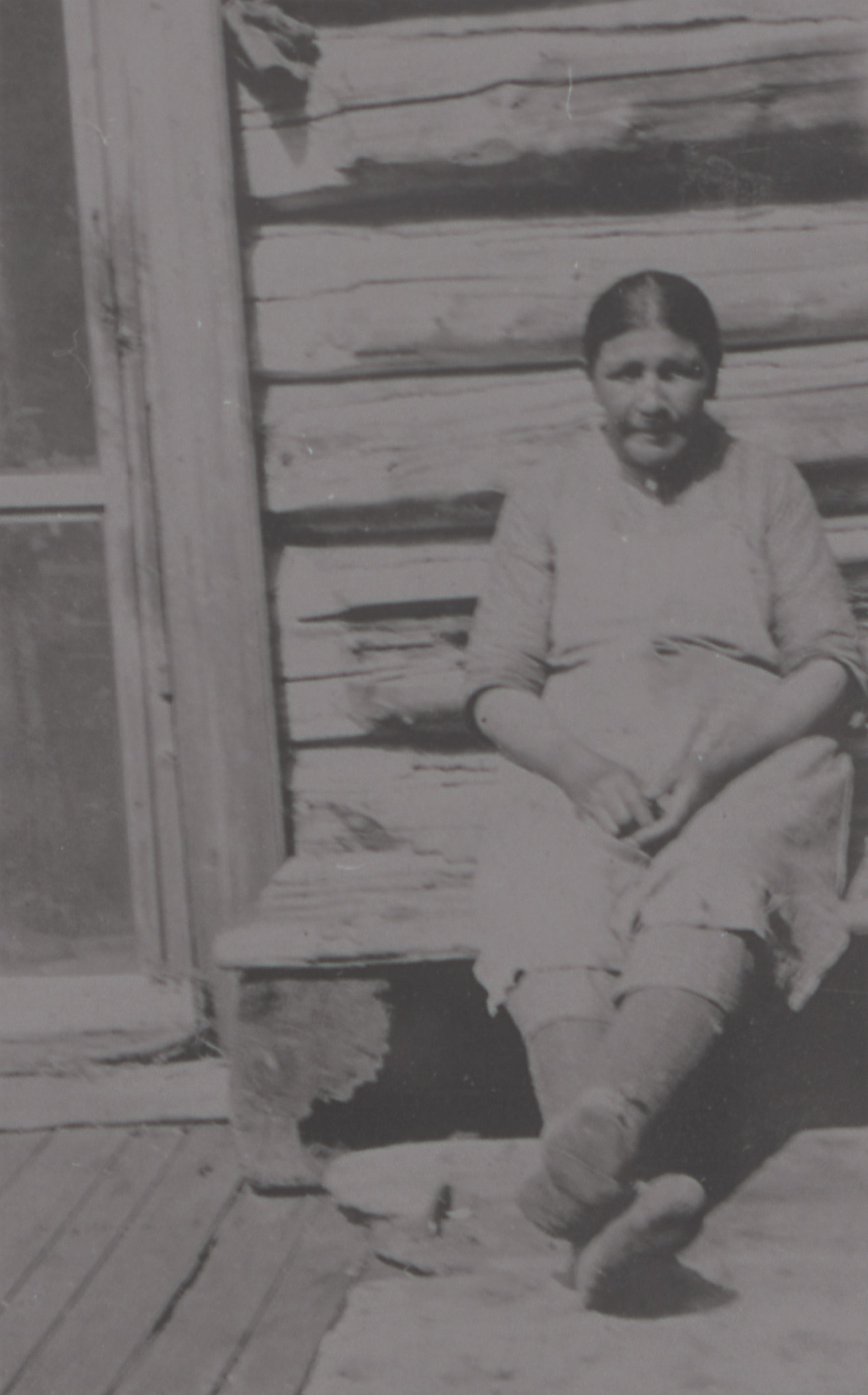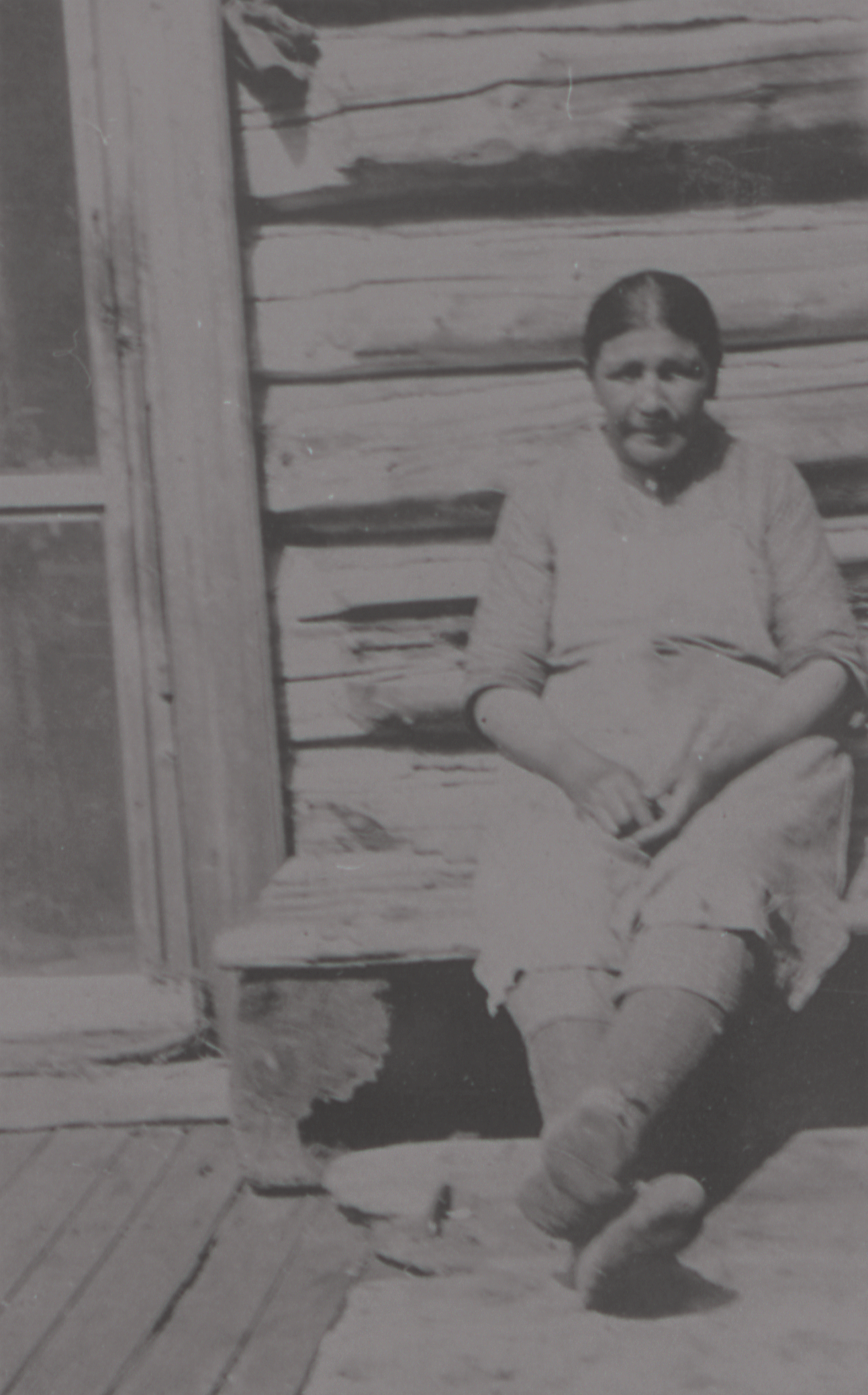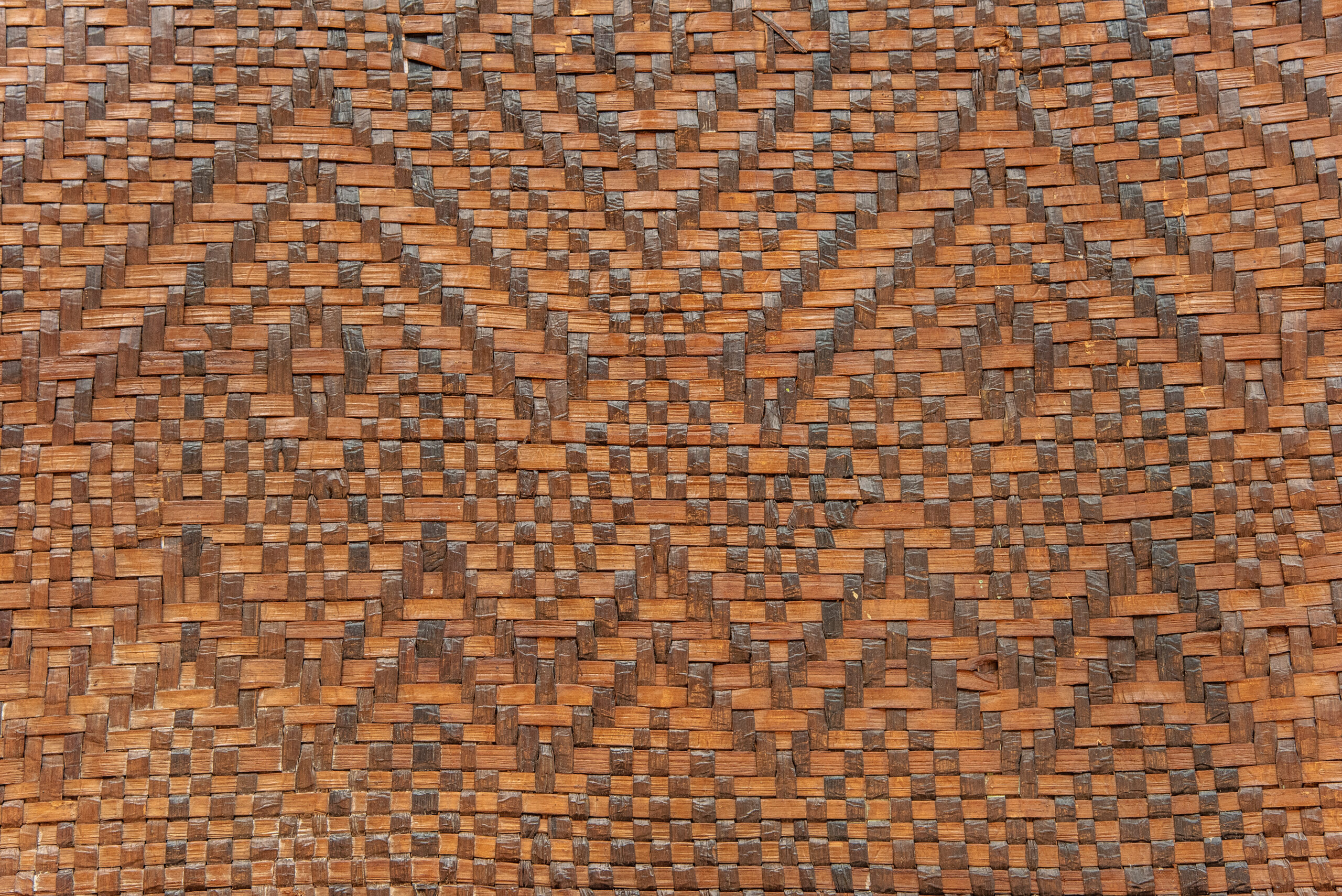
“Nibi Chronicles,” a monthly Great Lakes Now feature, is written by Staci Lola Drouillard. A Grand Portage Band of Ojibwe direct descendant, she lives and works in Grand Marais on Minnesota’s North Shore of Lake Superior. Her two books “Walking the Old Road: A People’s History of Chippewa City and the Grand Marais Anishinaabe” and “Seven Aunts” were published 2019 and 2022, and the children’s story “A Family Tree” will be released in May, 2024. “Nibi” is a word for water in Ojibwe, and these features explore the intersection of indigenous history and culture in the modern-day Great Lakes region.
Living with pets is hard on things. Floor treatments, in particular. So, this year in preparation for winter we retired an old area rug to the dumpster, and ordered a new one from an online source that offers free shipping. A hypocritical reaction, given how far most rugs travel before arriving at their forever home. I do feel bad about contributing to the problem of throw-away culture—our landfills and oceans are already overflowing with things humans no longer have use for. But trust me, this rug was beyond resurrection.
It has me thinking about what our Ojibwe ancestors used to keep the floors of their winter lodges clean and warm, back when preparing for cold weather did not involve moving things in trucks, but did require a lot of knowledge and skillful dexterity.
Here in northern Ojibwe territory, the most common floor and wall coverings came from the forest—an eco-version of linoleum, but much more portable. Created with thin strips of cedar bark using the suspended warp weaving method, handmade floor mats were sized to fit the desired use, ranging from 3 x 4 feet, to as large as 6 x 8 feet. A large mat might require more than 140 strips of bark and would take 35 or more hours to complete.
One of the master weavers from the border country was Tchi-Ki-Wis, whose English name was Helen Robinson. Tchi-Ki-Wis was Ojibwe from Lac La Croix First Nations, where she was born in 1873 and raised by her parents Laposh and Mandaquabeek (John and Susan Robinson).
It was in the border country where she met her partner and husband John Linklater, a Cree and Scottish outdoorsman whose family originally came from Moose Factory at the southern tip of James Bay. She was 16 and he was 19.
After they married, the couple lived at Jackfish Bay on Basswood Lake northeast of Winton, Minn., which was their home base through many years of making a living in the border country.

Photo of Tchi-Ki-Wis, c. 1930. (Photo courtesy of Tim Cochrane)

She knew how to carve canoe paddles out of one piece of cedar, fold sheets of birchbark into storage makaks and create intricate, beaded and quill designs on mittens, bandolier bags and clothes she made by hand.
Tchi-Ki-Wis teamed up with John to build sturdy jiimaanan—canoes—starting from the cedar bones of the frame and working outward. Together, she and John would split up the duties required for each task. He would often do the rough harvesting work and she would do the rest.
Historian’s detailed insights
North Shore author Tim Cochrane has written the history of the Linklaters in a book called Making the Carry: The Lives of John and Tchi-Ki-Wis Linklater. I emailed Tim to learn more about how this division of labor played out in the couple’s everyday lives, and he offered some additional examples.
“John often found and cut the cedar for a canoe and sometimes the canoe bark and brought it back to their Jackfish Bay home. Finding good trees with thick bark and free of knots was an important first step. John would also help get the canoe bed ready.” According to Tim, Tchi-Ki-Wis did most of the rest, including harvesting the spruce root and pitch, which was made of bear grease, charcoal, and spruce gum.
“Another example would be food. John, when he could, helped pick berries and hauled sugar from Winton to Jackfish Bay. Tchi-Ki-Wis did the canning and she was known for her wonderful strawberry jam. Moccasins would be another example. John ‘found’ or hunted the moose or deer and often field dressed it, but Tchi-Ki-Wis did the hard work in tanning the moose or deer hide.”
One of the things I learned from reading about the Linklaters, is the important artistic legacy that Tchi-Ki-Wis has carried forward. In fact, her collection of surviving cedar bark mats is the largest collection in the world of Anishinaabe mats created by one person.
Tim confirms that “most all” of the remaining mats were created in the 1920s while she lived at Minong-(Isle Royale), where John worked as a fishing and hunting guide, and where the couple opened the Birch Island Fishery at McCargoe Cove in 1927.
Many of her creations serendipitously became part of the “Warren Family Collection” of Woodland art and crafts, housed at Isle Royale. Fans of Tchi-Ki-Wis’s work, the Warren family was also influential in establishing Isle Royale National Park.
Tim has written extensively about the cultural link between Ojibwe people and Minong—a place Tchi-Ki-Wis visited with her grandmother when she was a young girl. Tim believes that connecting her work to Isle Royale and affirming exact provenance allows us to “conclude that we live in an area that was a home to cedar bark mat making. It is important because it says that this indigenous art form was alive and well and flourishing in the late 1920s on the Island. There are too few material manifestations of indigenous presence on Minong and mats are the most dramatic and beautiful example of that presence.”
Cross-cultural aesthetics

Cedar bark mat with otter-trail border. (Photo courtesy of Travis Novitsky)
Some of the design elements Tchi-Ki-Wis used in her work are as understated as they are magnificently crafted. Incorporating natural dyes to create shadow and light, she adds a “medicine eye” pattern to some mats, including one that incorporates multi-colored plaid with medicine eyes, weaving elements of European and Anishinaabe aesthetics together in one piece. Several of the mats have bold geometric patterns, using an “otter trail” pattern to create rhythmic, decorative edges.
The archive of Tchi-Ki-Wis’s work was once larger, but since she stopped making mats and other art objects in the late 1920s, much of her work was lost. Tim shares the story of how the collection of mats was placed in storage at park headquarters, and “largely forgotten” by the powers that be.
Some mats that were taken off the island were damaged and eventually tossed out. Only those that stayed safely in storage as part of the Warren collection survived. Tim sees honoring and preserving Tchi-Ki-Wis’s work as a form of “Indian survival.” In his book he writes that they “. . . are testimony that she and others preferred their artistic and utilitarian traditions, and by doing them refused to be fully absorbed into mainstream America.”
Tchi-Ki-Wis sold her mats to tourists visiting Isle Royale for between $1.50 and $8.00 each, noting that the owner of Rock Harbor Lodge took a 10% commission on all sales. She was never known to publicly speak English, and yet proved to be adaptable and resilient all throughout her life.
Now her work may finally be getting its due, and perhaps a public debut at a yet-to-be-determined venue.
All the mats are currently housed at the Grand Portage National Monument except for one, which is at the Science Museum of Minnesota in St. Paul. However, the work is only on loan to Grand Portage National Monument and is still technically “owned” by Isle Royale National Park.
There is a question of where they might “live” in the future–at Grand Portage or at the Isle Royale Museum in Calumet, Michigan in the Keweenaw Peninsula. Tim hopes, “they will stay in Grand Portage where Linklater descendants can more readily see them and also to make them accessible to the current generation of indigenous makers that want to learn from viewing these remarkable mats.”
But he says before the mats can be displayed, a conservation survey is needed to determine how to stabilize those in tougher shape. And conservation work needs to be arranged so the mats are well treated in the future, which will ensure a longer life.
Historians speculate that a well-constructed cedar bark mat that was specifically designed to be rolled up for transport and placed inside a winter lodge might last 15 to 20 years, if well cared for.
Until Tchi-Ki-Wis’s mat collection is settled in one place, you can see several photographs and read the full scope of history in Tim Cochrane’s well researched story of John and Tchi-Ki-Wis Linklater—a couple who changed the course of border country cultural and economic history by carrying forward the traditions of the past. It seems that the spirit of survivance found in Tchi-Ki-Wis’s work also carries a lesson about the inherent value of homemade things, and the careless nature of modern throw-away culture.
Catch more news at Great Lakes Now:
Nibi Chronicles: A beaver named Annabelle, her kin, and us
Nibi Chronicles: A portal to the Burt Lake Band’s violent expulsion
Featured image: Small cedar bark mat from the Warren Collection. (Photo courtesy of Travis Novitsky)
1 Comment
-
What a beautiful little article about the small details of the things of our day-to-day lives, and the stories these things have to tell about our lives and our past. And thank you for providing a real-life anecdote to highlight one of those lessons about our modern throw-away consumerist culture.




